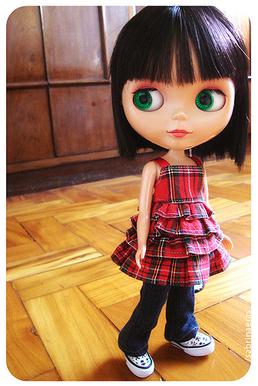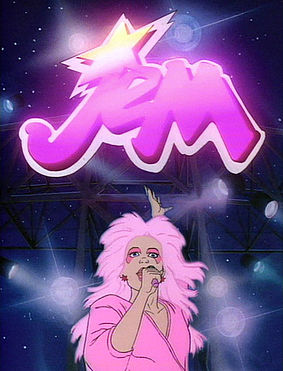
Mattel, Inc. is an American multinational toy manufacturing and entertainment company founded in Los Angeles by Harold Matson and the husband-and-wife duo of Ruth and Elliot Handler in January 1945 and headquartered in El Segundo, California. Mattel has a presence in 35 countries and territories; its products are sold in more than 150 countries. Mattel consists of three business segments: North America, International and American Girl.

Barbie is a fashion doll created by American businesswoman Ruth Handler, manufactured by American toy and entertainment company Mattel and introduced on March 9, 1959. The toy was based on the German Bild Lilli doll which Handler had purchased while in Europe. The figurehead of an eponymous brand that includes a range of fashion dolls and accessories, Barbie has been an important part of the toy fashion doll market for over six decades. Mattel has sold over a billion Barbie dolls, making it the company's largest and most profitable line. The brand has expanded into a multimedia franchise since 1984, including video games, animated films, television/web series, and a live-action film.

Kenneth Sean "Ken" Carson Jr. is a fashion doll introduced by American toy company Mattel in 1961 as the counterpart of Barbie, who had been introduced two years earlier.

Bratz is an American fashion doll and media franchise created by former Mattel employee Carter Bryant for MGA Entertainment, which debuted in 2001.
Kenner Products, known simply as Kenner, was an American toy company founded in 1946. Throughout its history, the Kenner brand produced several highly recognizable toys and merchandise lines including action figures like the original series of Star Wars, Jurassic Park and Batman as well as die cast models. The company was closed and merged by its corporate parent Hasbro in 2000.

Blythe is a fashion doll, about 28 cm (11 inch) tall, with an oversized head and large eyes that change color with the pull of a string. It was created in 1972 and was initially only sold for one year in the United States by toy company Kenner. In 2001, the Japanese toy company Takara began producing new editions of Blythe dolls. There is a network of hobbyists who customize the doll for resale and create clothing and shoes for Blythe. Enthusiasts share photographs of their work and other types of dolls on the Internet.

Jem, also known as Jem and the Holograms, is an American animated musical television series that ran from 1985 to 1988. The series is about record company owner Jerrica Benton, her singer alter-ego Jem, and the adventures of Jem and her band the Holograms.
Since Barbie's introduction as a teenage fashion model in 1959, the doll has been portrayed with many careers. Dolls are sold with sets of clothes and accessories that fit the career being portrayed. For example, the Lifeguard Barbie playset includes a Barbie, an outfit with shoes, a lifeguard chair, a dolphin, and a life preserver, while the Spanish Teacher Barbie includes a Barbie, an outfit with shoes, flashcards, a Spanish quiz, an easel, a notebook, a key chain, and a hairbrush.
Bernard Loomis was an American toy developer and marketer who introduced some of the world's most notable brands including Chatty Cathy, Barbie, Hot Wheels, Baby Alive, and Strawberry Shortcake, but perhaps his biggest marketing success was bringing a then-unknown film property called Star Wars to the toy shelves.

Sindy is a British fashion doll created by Pedigree Dolls & Toys in 1963. A rival to Barbie, Sindy's look and range of fashions and accessories made her the best-selling toy in the United Kingdom in 1968 and 1970. After Marx Toys' unsuccessful attempt to introduce Sindy in the United States in the late 1970s, Hasbro bought the rights to Sindy and remodelled the doll to look more American. As a result, the doll's popularity declined; in addition, Barbie manufacturer Mattel filed a lawsuit for copyright infringement, which was settled when Hasbro agreed to remodel Sindy's face. During the 1990s, Barbie's share of the doll market continued to grow while Sindy's diminished, which led to Sindy being delisted from major retailers in 1997. Hasbro returned the doll's licence to Pedigree, and the doll was relaunched in 1999, manufactured by Vivid Imaginations. Sindy's 40th anniversary in 2003 saw a new manufacturer, New Moons, and another relaunch and redesign. There were further relaunches in 2016 by Tesco and in 2021 by Kid Kreations.

Maxie's World is an American animated children's television program produced by DIC Animation City. Distributed by Claster Television and Saban International and originally aired in first-run syndication in the United States from September 18, 1989 through October 30, 1989. It consists of one season, comprising a total of 32 episodes, each 15 minutes long. In the series' original run, Maxie's World alternated on weekdays with Beverly Hills Teens and It's Punky Brewster. The series was briefly rerun on USA Network in 1994.

Hi-Tops Video was a children's home video sublabel of Media Home Entertainment, active from 1986 until 1991. Some of its releases include some Charlie Brown specials, Madeline and primarily some of the original Baby Songs video releases beginning in 1987.
Earring Magic Ken, also known as "Gay Ken" and "Fey Ken", is a model of the Ken doll introduced by Mattel in 1993 as a companion to its Earring Magic Barbie figure, one of five dolls in the Earring Magic Barbie line.

Barbie and the Rockers: Out of This World is a 1987 American animated television special created by DIC Animation City with Saban Productions featuring popular Mattel character Barbie. The story was based on the Barbie and the Rockers line of dolls, which featured Barbie as the leader of a rock band. The special originally aired in syndication. It was later released as a single tape by Hi-Tops Video. Foreign rights were assumed by Channel 5 Video, a joint-venture of Heron Communications and PolyGram.

Beginning with the release of an eponymous video game in 1984, Barbie, a fashion doll manufactured by American toy and entertainment company Mattel and debuted on March 9, 1959, has been featured in a media franchise predominantly consisting of a film series and media formats across technologies like television and the Internet. Since then, it has become one of the highest-grossing media franchises of all time and has been referred to among fans as the "Barbie Cinematic Universe".
Princess of Power is a toyline created by Mattel. Among others, it features the characters of She-Ra and Catra on planet Etheria. With its launch in 1984, the toyline spawned a variety of products, including three lines of fashion action figures. The Princess of Power logo and characters are currently used by Mattel as part of the Masters of the Universe Classics toyline.
Monster High is an American multimedia-supported fashion doll franchise created by toy designer Garrett Sander and launched by Mattel in 2010. The show is aimed at children ages 7-14, the franchise features characters inspired by monster movies, sci-fi horror, thriller fiction, folklore, myths and popular culture, centering around the adventures of the teenage children of monsters and other mythical creatures attending a high school of the same name.
Integrity Toys is a toy company that designs and markets fashion and celebrity dolls and related accessories, with a focus on high-end fashion dolls. Integrity Toys was founded in 1995 by Percy Newsum. Integrity Toys is a privately held company located at 100 Chestnut Springs Road in Chesapeake City, Maryland.









